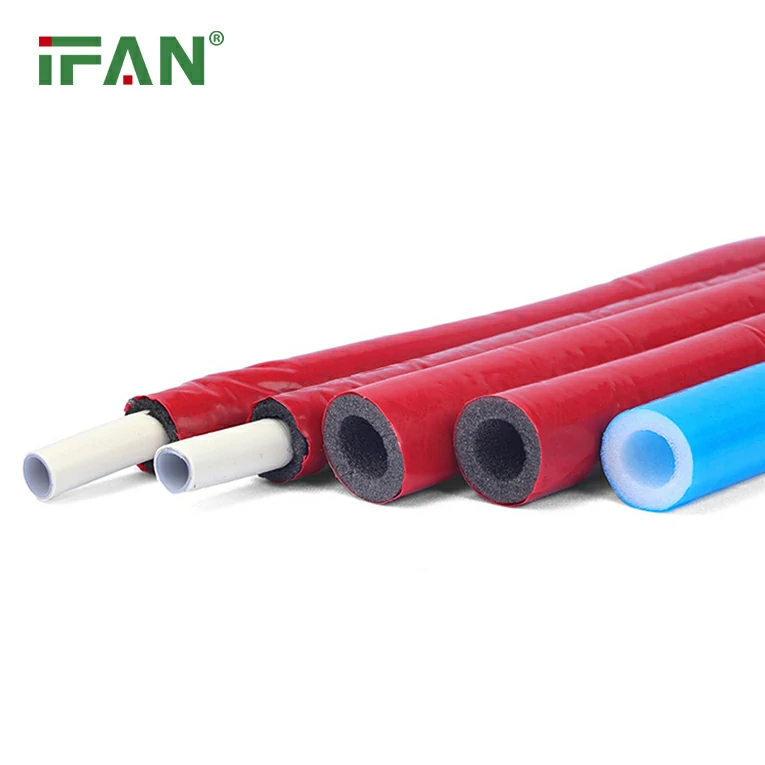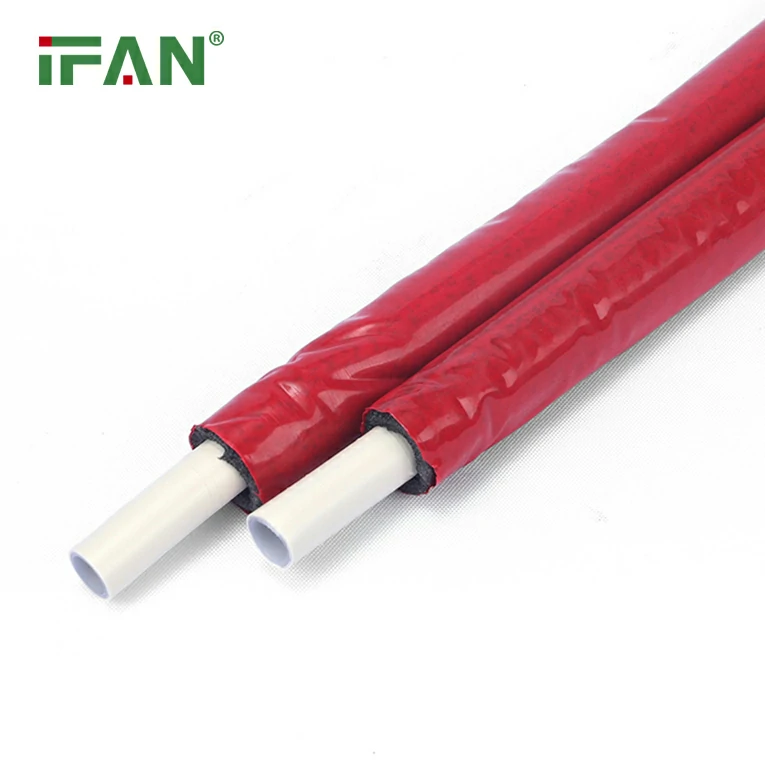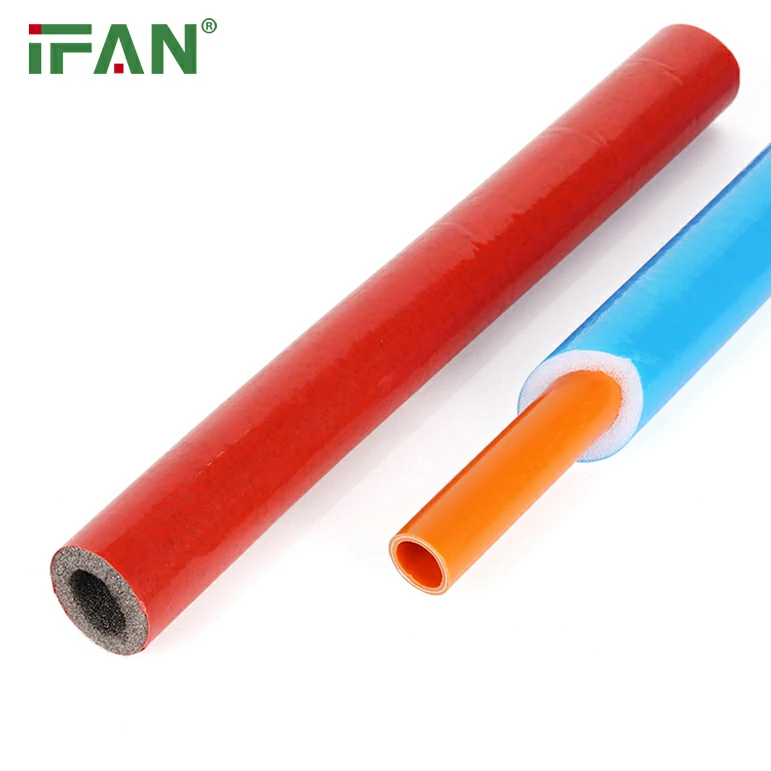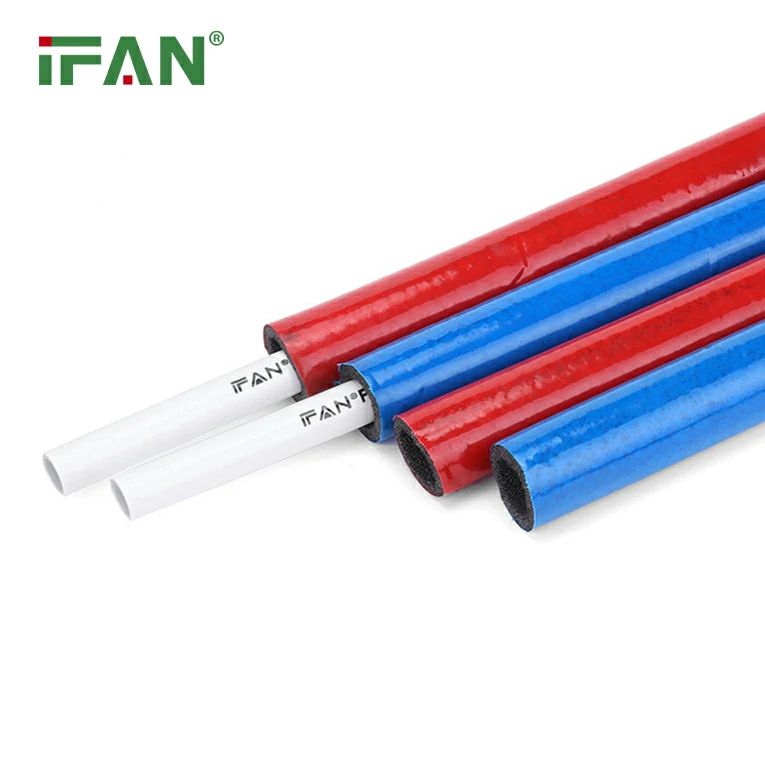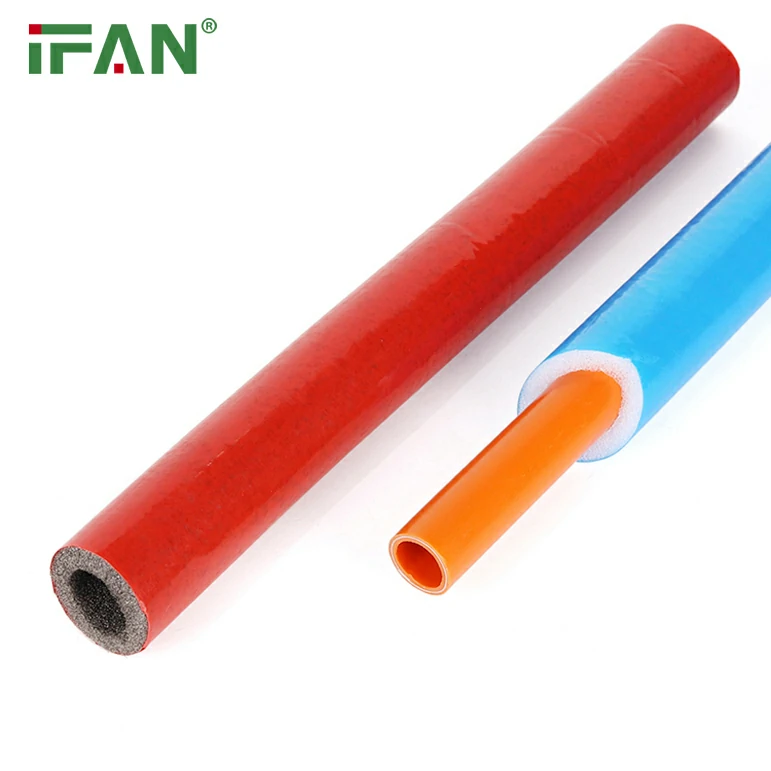In the quest to build a more sustainable future, the plumbing industry is making significant strides in adopting eco-friendly solutions. Uponor, a global leader in the development and manufacturing of plumbing systems, has recently launched the world’s first bio-based PEX (cross-linked polyethylene) pipe. This groundbreaking innovation promises to revolutionize the plumbing industry by reducing carbon emissions by an impressive 90%, making it one of the most sustainable plumbing solutions available today.
In this article, we will explore the significance of Uponor’s new bio-based PEX pipe, its environmental benefits, how it compares to traditional PEX pipes, and its potential applications in modern plumbing systems. As the world increasingly focuses on reducing carbon footprints and embracing sustainable building practices, bio-based PEX piping systems are poised to play a pivotal role in shaping the future of plumbing infrastructure.
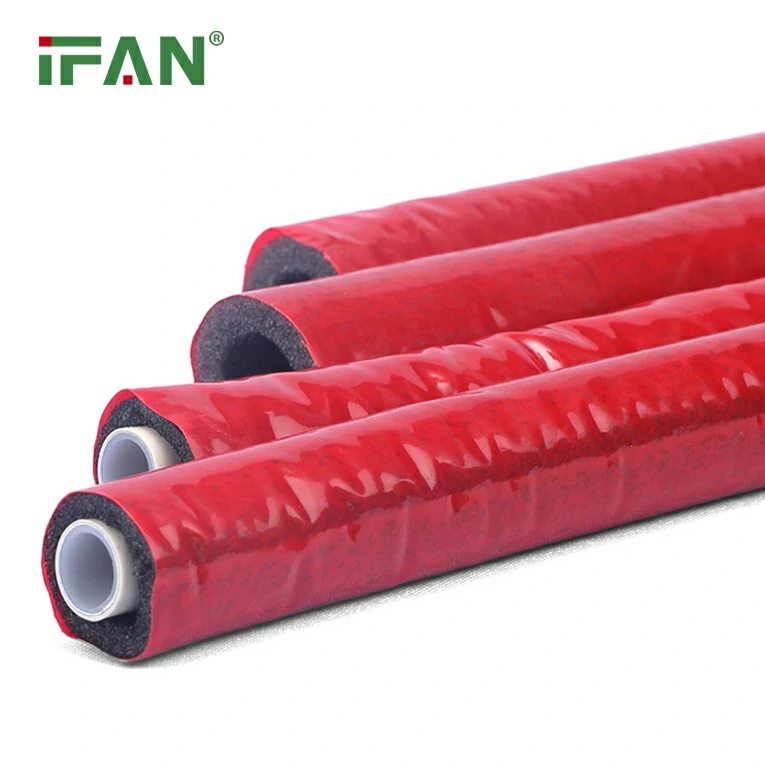
What is Bio-Based PEX Pipe?
PEX pipe, a versatile and durable plumbing material, is widely used in both residential and commercial applications. Traditionally, PEX pipes are made from petroleum-based polyethylene, a material that, while highly effective, has an environmental cost due to its production process. However, the introduction of bio-based PEX represents a significant step forward in the quest for sustainability.
Uponor’s bio-based PEX pipe is made from renewable resources, primarily derived from plant-based materials. This innovative PEX material reduces the reliance on fossil fuels, significantly lowering the carbon footprint associated with its production. By substituting a portion of petroleum-based materials with renewable biopolymers, Uponor has created a product that is not only environmentally friendly but also retains the same high performance and durability as traditional PEX pipes.
The Environmental Impact of Bio-Based PEX Pipe
One of the most significant advantages of Uponor’s bio-based PEX pipe is its ability to reduce the carbon footprint by an astounding 90%. This reduction in carbon emissions is achieved through several key factors:
1. Reduced Fossil Fuel Consumption
Traditional PEX pipes are made from polyethylene, a plastic derived from petroleum. The extraction and processing of petroleum contribute significantly to carbon emissions and other environmental impacts. Bio-based PEX pipes, on the other hand, replace a substantial portion of the petroleum-based materials with bioplastics derived from renewable sources, such as plant starches and oils.
By using renewable materials, Uponor’s bio-based PEX pipes help reduce the demand for fossil fuels, contributing to a lower environmental impact throughout the production process. This shift represents a significant step toward achieving a more sustainable and circular economy.
2. Lower Carbon Emissions During Manufacturing
The manufacturing process for bio-based PEX pipes generates far fewer carbon emissions than the production of traditional petroleum-based PEX. Bio-based plastics require less energy to produce and have a lower environmental impact, making the overall production process more sustainable.
Uponor’s commitment to reducing the carbon footprint of its products extends beyond just the raw materials. The company has implemented energy-efficient production methods and sustainable practices throughout the entire manufacturing process, ensuring that their bio-based PEX pipes are as eco-friendly as possible.
3. Biodegradability and End-of-Life Disposal
In addition to its sustainable production process, bio-based PEX also offers advantages in terms of disposal. While traditional PEX pipes are not biodegradable, certain bio-based PEX materials can be more easily recycled or biodegraded at the end of their life cycle, reducing the amount of waste sent to landfills.
Though bio-based PEX pipes are still a relatively new innovation, Uponor’s commitment to research and development in this area suggests that future improvements will make these pipes even more sustainable in terms of disposal and recycling.
Benefits of Bio-Based PEX Pipes
The environmental benefits of bio-based PEX pipes are clear, but this innovative material also brings a host of practical advantages for both homeowners and businesses alike. Here are some of the key benefits of using bio-based PEX pipes in plumbing systems:
1. Durability and Longevity
Just like traditional PEX pipes, Uponor’s bio-based PEX pipes are designed to be highly durable and long-lasting. PEX pipes are known for their resistance to corrosion, scaling, and freezing, which makes them ideal for both residential and commercial plumbing systems. Bio-based PEX pipes retain these qualities, ensuring that they will perform reliably for many years, even in harsh conditions.
2. Ease of Installation
One of the reasons why PEX piping systems have gained popularity in recent years is their ease of installation. PEX pipes are flexible, lightweight, and can be bent around corners without the need for additional fittings or joints. This makes them easier to install compared to rigid materials like copper and PVC. Bio-based PEX pipes offer the same ease of installation, making them a convenient and cost-effective solution for both new construction and renovation projects.
3. Cost-Effective Solution
Bio-based PEX pipes provide a cost-effective alternative to traditional plumbing materials, such as copper and steel. While the initial cost of bio-based PEX may be slightly higher than standard PEX, the long-term benefits in terms of durability, energy efficiency, and sustainability outweigh the upfront investment.
In addition, the ease of installation and reduced need for maintenance over the lifespan of the pipes make bio-based PEX a smart choice for both residential and commercial plumbing systems.
4. Versatility in Applications
Bio-based PEX pipes can be used in a wide range of applications, from residential water supply systems to commercial heating and cooling systems. These pipes are suitable for both hot and cold water systems, as well as underfloor heating systems, making them an incredibly versatile solution for modern plumbing.
The flexibility and resilience of bio-based PEX pipes allow them to be used in a variety of settings, including homes, offices, hotels, hospitals, and industrial facilities. Their versatility makes them an ideal choice for both new construction and retrofit projects.
Comparing Bio-Based PEX Pipes to Traditional PEX Pipes
While bio-based PEX pipes offer several environmental and practical advantages, it is important to understand how they compare to traditional PEX pipes. Below is a comparison of bio-based PEX with conventional PEX in terms of key factors:
| Factor | Bio-Based PEX Pipe | Traditional PEX Pipe |
|---|---|---|
| Material | Made from renewable, plant-based biopolymers | Made from petroleum-based polyethylene |
| Carbon Footprint | 90% lower carbon footprint | Higher carbon emissions due to petroleum-based materials |
| Durability | Comparable to traditional PEX in terms of strength and resistance to corrosion | Highly durable and resistant to corrosion |
| Installation | Flexible and easy to install, like traditional PEX | Flexible and easy to install |
| Recyclability | Can be recycled or biodegraded in certain conditions | Non-biodegradable and difficult to recycle |
| Cost | Slightly higher upfront cost due to bioplastics | More affordable in terms of material costs |
While bio-based PEX pipes may have a higher initial cost, their reduced environmental impact, long-term durability, and recyclability make them an attractive option for eco-conscious homeowners and businesses.
Potential Applications of Bio-Based PEX Pipes
Uponor’s bio-based PEX pipes are suitable for a wide range of applications in both residential and commercial settings. Some of the most common uses for bio-based PEX include:
1. Residential Plumbing Systems
Bio-based PEX pipes are an excellent choice for residential plumbing systems, including water supply lines, radiant floor heating, and underfloor heating. Their flexibility makes them easy to install in both new homes and renovation projects, while their durability ensures reliable performance for many years.
2. Commercial and Industrial Applications
In commercial and industrial settings, bio-based PEX pipes can be used for heating, cooling, and water distribution systems. Hotels, hospitals, schools, and offices can benefit from the long-lasting, energy-efficient properties of bio-based PEX, which can help reduce operational costs and improve environmental sustainability.
3. Underfloor Heating Systems
Bio-based PEX pipes are commonly used in radiant floor heating systems, which provide a comfortable and energy-efficient way to heat spaces. By using bio-based PEX, property owners can reduce their carbon footprint while enjoying the benefits of efficient underfloor heating.
Conclusion
Uponor’s launch of the world’s first bio-based PEX pipe represents a significant milestone in the pursuit of sustainability within the plumbing industry. By reducing carbon emissions by 90% compared to traditional PEX, this innovation offers a more eco-friendly alternative without compromising on performance, durability, or ease of installation.
With increasing demand for sustainable building materials and plumbing solutions, bio-based PEX pipes are poised to play a pivotal role in shaping the future of plumbing systems. Homeowners, businesses, and industries looking to reduce their environmental impact can now rely on a high-quality, sustainable solution that aligns with their sustainability goals.
Frequently Asked Questions (FAQ)
1. What is bio-based PEX pipe?
Bio-based PEX pipe is a sustainable plumbing material made from renewable, plant-based materials instead of petroleum-based polyethylene. It reduces the carbon footprint of production by 90%.
2. How does bio-based PEX compare to traditional PEX in terms of performance?
Bio-based PEX offers the same durability, flexibility, and resistance to corrosion as traditional PEX, making it suitable for a wide range of plumbing applications.
3. What are the environmental benefits of bio-based PEX pipe?
Bio-based PEX pipe significantly reduces the carbon footprint of production, lowers reliance on fossil fuels, and can be more easily recycled or biodegraded at the end of its lifecycle.
4. Is bio-based PEX pipe more expensive than traditional PEX?
Bio-based PEX may have a slightly higher initial cost due to the use of
bioplastics, but it offers long-term savings through durability, energy efficiency, and reduced environmental impact.
5. What are the applications of bio-based PEX pipes?
Bio-based PEX pipes are ideal for residential plumbing systems, underfloor heating, commercial applications, and industrial heating and cooling systems. They are flexible, durable, and energy-efficient.

